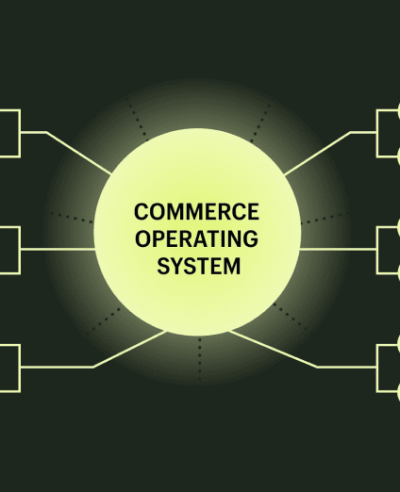- SolutionsGo BackShopify PlusStay ahead of the curve with top-tier e-commerce techCommerce OperationsGrow your e-commerce business and marketplaceAI for CommerceReinvent commerce in the AI ageIn-house SpecialistsTop e-commerce specialists in a dedicated team setupDigital ServicesCustom services for brands
- Work
- Insights
- Join us
- SolutionsGo BackShopify PlusStay ahead of the curve with top-tier e-commerce techCommerce OperationsGrow your e-commerce business and marketplaceAI for CommerceReinvent commerce in the AI ageIn-house SpecialistsTop e-commerce specialists in a dedicated team setupDigital ServicesCustom services for brands
- Work
- Insights
- Join us
- fr
- en
The 5 mutations shaping the new era of commerce

With AI, E-commerce Discovers Its Superpowers
1. Agentic Commerce: Your Next Customers Will Be AIs
Specifically, preparation involves:
- Optimizing your GSO (Generative Search Optimization) to be visible in AI environments.
- Making your catalog compatible with semantic and conversational search (attributes, schemas, criteria).
- Experimenting with agent-to-agent shopping APIs, especially in B2B.
Takeaway: Conversational AIs are becoming prescribers who never sleep.
2. Unified Commerce: One Customer, One Cart, One Continuous Experience
Key Benefits:
- Seamless journeys, regardless of the channel.
- Prioritized and synchronized returns and exchanges.
- Fluid loyalty and customer service.
Commerce is no longer a luxury: it is the core of a coherent and data-driven experience.
3. Augmented Commerce: The Experience Adapts in Real-Time
The customer experience is no longer just decoration: it’s a conversion engine. Thanks to Generative UX, interfaces, visuals, and messages automatically adjust to each visitor. AI becomes a co-pilot for design and content, creating unique and effective journeys:
- Dynamic layouts and visuals
- Continuously generated and tested micro-texts
- Assistants that advise and reassure at the right moment
Result: less hesitation, fewer returns, more certainty at purchase.
4. Smart Commerce: See, Understand, Act
The era of instinct-based decision-making is over. High-performing brands let their data speak. With new interconnection protocols—such as the Model Context Protocol (MCP)—AI interacts directly with your datasets to:
- Answer your business questions
- Predict behaviors
- Adjust your decisions in real-time
Concrete applications: predictive recommendations based on intent, dynamic pricing depending on context, intelligent management of stock and margins. Data-driven e-commerce: more precise, faster, always evolving.
5. Automated Commerce: Automate Operations, Focus on Growth
Automation is becoming the silent engine of modern commerce. With no-code tools like Shopify Flow, it’s possible to orchestrate entire processes without human intervention: cart recovery, fraud detection, stockout notifications, refunds, marketing segmentation, etc.
Observed Effects:
- Up to 90% reduction in operational costs
- Teams freed up for strategy
- A more reactive experience, 24/7
Automation is no longer a gadget: it’s a lever for performance and scalability.
What This Means for Your Brand
- Make your products readable by agents (attributes, schemas, purchase criteria).
- Unify data, pricing, stock, and orders to eliminate gaps.
- Personalize execution (Generative UX, content, assistance) to convert.
- Operate in real-time (MCP, conversational analytics) to decide quickly.
- Automate operations to focus energy on customer value.
Horrea, In Practice
At Horrea, we believe that data-driven commerce performs best for clients and teams. We integrate your stacks (catalogs, OMS, CRM), secure flows (GDPR, governance), and deploy unified, augmented journeys with your teams. The result: deciding on reliable data, understanding behaviors, and delivering fast and friction-free. Want to go further? Explore our cases, our methods, or let’s talk!
To help you envision this, we’ve designed a simple and actionable framework to help brands gain clarity and act quickly.
We’re offering a complimentary 45-minute strategic session to:
- Assess your maturity on the 5 key changes
- Define the 3 most profitable levers to activate
- Leave with a prioritized action plan for the next 90 days.










